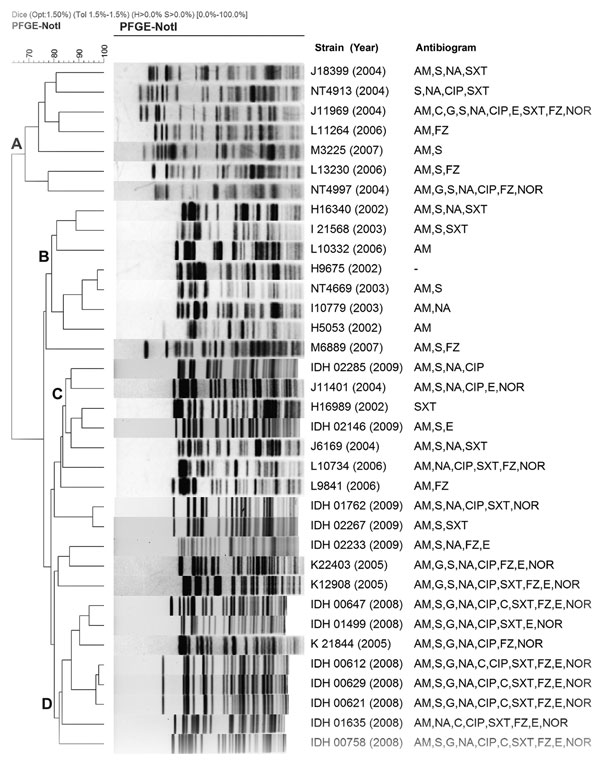Volume 18, Number 11—November 2012
Dispatch
Vibrio fluvialis in Patients with Diarrhea, Kolkata, India
Figure

Figure. . . . Dendrogram of NotI-digested pulsed-field gel electrophoresis (PFGE) profiles with representative Vibrio fluvialis isolates. Clustering identified 4 clades (A–D). AM, ampicillin; S, streptomycin; G, gentamicin; NA, nalidixic acid; CIP, ciprofloxacin; C, chloramphenicol; E, erythromycin; SXT, sulfamethoxazole-trimethoprim; FZ, furazolidone; NOR, norfloxacin. Scale bar indicates degree of similarity.
Page created: October 16, 2012
Page updated: October 16, 2012
Page reviewed: October 16, 2012
The conclusions, findings, and opinions expressed by authors contributing to this journal do not necessarily reflect the official position of the U.S. Department of Health and Human Services, the Public Health Service, the Centers for Disease Control and Prevention, or the authors' affiliated institutions. Use of trade names is for identification only and does not imply endorsement by any of the groups named above.